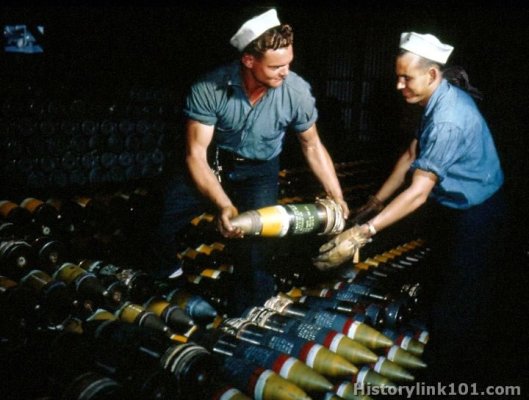That's one heck of a trawler, certainly not a single-hand vessel.
There are pieces of the Yamato in outside display at the Washington Naval Yard. Most people were in awe of the 18.1" main guns of the Yamato--our biggest were 16".
After the war the US Navy did testing on some spare pieces of the Yamato's armor and were surprised their 16" guns had no trouble penetrating it. Looking at the armor which the 16" penetrated shows how much force those rounds had.
...
Glad you brought this up. It was one of the thoughts I had when this discussion got started.
The USS New Jersey has a great You Tube channel that I found, somehow, during the lock down. It has a huge amount of content about the ship but also other ships and quite a bit of technical information, including discussions about the Yamato, Bismark, etc. I have watched quite a bit of their content but no where near it all.
https://www.youtube.com/c/BattleshipNewJersey/featured
I THINK, one of the USS NJ shows went to the Washington Naval Yard, and showed the Yamato armor that was shot by a 16" round. I know I have seen it, but it could have been on another channel.
It might have been on this channel,
https://www.youtube.com/user/Drachinifel. This channel is unreal. Many of his shows are 45 minutes or more, and some are an hour or longer. I don't know how the guy does it but he knows his stuff, does good research and produces some really good shows. He could have shown the Yamato armor as well.
It pains me to say it, while the USS North Carolina has it's own YouTube channel,
https://www.youtube.com/user/TheBattleshipNC, the USS New Jersey's has more content. I hope the USS NC sees what the USS New Jersey is going with video content and starts producing more.
While not naval specific, The History Guy,
https://www.youtube.com/channel/UC4sEmXUuWIFlxRIFBRV6VXQ does cover some great history, as he says, that should not be forgotten.
Since we were talking about Munro, here is The History Guy's episode:
If no more history content was added to YouTube, I don't think I could watch all of the history related shows in the next 50 years.


Later,
Dan



 Maybe I read it in another history book. I sure have read enough and have walls full of history books.
Maybe I read it in another history book. I sure have read enough and have walls full of history books. 